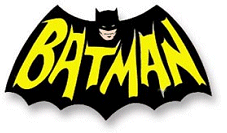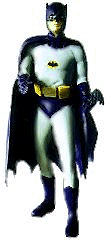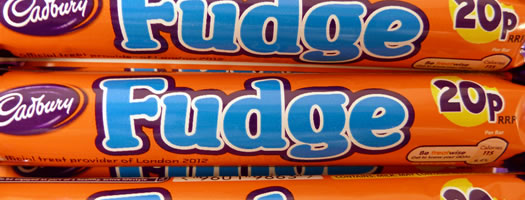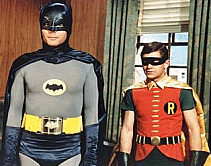
Batman’ was one of the most popular television series of the Sixties, a tongue-in-the-cheek treatment of the adventures of a costumed superhero who had made his debut in Detective Comics in 1939 and had previously been the subject of two Columbia Pictures’ series, ‘Batman’ and ‘Batman and Robin.’
ABC television was interested in featuring a series based on a comic strip character in their 7.30 pm slot. They’d drawn up a list of five possible choices, based on popularity: Dick Tracy, Superman, Batman, The Green Hornet and Little Orphan Annie. As the rights to the first two character on the list weren’t available, they decided to go ahead with a ‘Batman’ project.
 The Batman character was originally created for detective Comics in 1939 by Bob Kane. Produced by American network ABC, the first television series exploded on to prime time television on January 12th 1966 after a multi-million dollar advertising campaign. The show was originally transmitted twice a week, on consecutive nights, with the first night always leaving either or both the Dynamic Duo in mortal danger at the hands of one of their outrageous arch-enemies. This was a ploy also used in the comic book version, the plot of which was, in nearly all ways, followed closely by the TV programme creators......
The Batman character was originally created for detective Comics in 1939 by Bob Kane. Produced by American network ABC, the first television series exploded on to prime time television on January 12th 1966 after a multi-million dollar advertising campaign. The show was originally transmitted twice a week, on consecutive nights, with the first night always leaving either or both the Dynamic Duo in mortal danger at the hands of one of their outrageous arch-enemies. This was a ploy also used in the comic book version, the plot of which was, in nearly all ways, followed closely by the TV programme creators......
Criminals had murdered teenage Bruce Wayne's parents, leaving him the sole beneficiary of a massive fortune which he used, over time, to create high-tech crime-fighting gadgetry, such as the implements contained in the famous 'utility belt', allowing him to adopt the alter-ego of the mysterious caped crusader, the Batman, whilst retaining the outward appearance of a casual rich 'playboy'. His secret base, the Bat Cave, was located underground beneath his opulent mansion Wayne Manor, 14 miles outside Gotham City, and was reached by means of the Bat-poles. Batman was a 1960s American television series, based on the DC Comic of the same name. It starred Adam West as Batman and Burt Ward as Robin — two crime-fighting heroes who defend Gotham City. It aired on the American Broadcasting Corporation (ABC) network for two and a half seasons from January 12, 1966 to March 14, 1968. The show was aired twice weekly for its first two seasons, resulting in the production of a total of 120 episodes.
In the early 1960s, Ed Graham Productions optioned the television rights to the Comic strip Batman and planned a straightforward juvenile adventure show, much like Adventures of Batman and The Lone Ranger, to air on CBS on Saturday mornings. Former American football linebacker and actor Mike Henry was set to star as Batman.
Reportedly, DC Comics commissioned publicity photos of Henry in a Batman costume. Around this same time, the Playboy Club in Chicago was screening the Batmanserials (1943's Batman and 1949's Batman and Robin) on Saturday nights. It became very popular. East coast ABC executive Yale Udoff, a Batman fan in his childhood, attended one of these parties at the Playboy Club and was impressed with the reaction the serials were eliciting. He contacted ABC executives Harve Bennett and Edgar J.Scherick, who were already considering developing a television series based on a comic strip action hero, to suggest a prime time Batman series in the hip and fun style of The Man form U.N.C.L.E. .When negotiations between CBS and Graham stalled, DC Comics quickly reobtained rights and made the deal with ABC, who farmed the rights out to 20th Century Fox to produce the series.
The typical story began with a villain (often one of a short list of recurring villains) committing a crime, such as stealing a fabulous gem or taking over Gotham City. This was followed by a scene inside Commisioner Grodan's office, where he and Chief O'Hara would deduce which villain was responsible. Commissioner Gordon would press a button on the Batphone, a bright red telephone located on a pedestal in his office. The scene would then cut to stately Wayne Manor where Alfred (the butler) would answer the Batphone, which sat like a normal everyday telephone on the desk in Bruce Wayne's study. Frequently, Wayne and his ward, Dick Grayson, would be found talking with Dick's Aunt Harriet Cooper, who was completely unaware of Bruce's and Dick's secret identities. Alfred would discreetly interrupt so they could excuse themselves to go to the Batphone. Upon learning which criminal he would face, Wayne would push a button concealed within a bust of Shakespeare that stood on his desk. This would cause a bookcase to slide back and reveal two Fireman's poles. "To the Batpoles!" Wayne would exclaim, and he and Grayson would slide down to the Batcave, activating an unseen mechanism on the way that dressed them as their alter egos. The title sequence often began at this point.

Similar in style and content to the 1940s serials, Batman and Robin would arrive in the Batcave in full costume and jump into the Batmobile, with Batman in the driver's seat. Robin would say, "Atomic batteries to power...turbines to speed." Batman would respond, "Roger, ready to move out," and the two would drive out of the cave at high speed. As the Batmobile approached the mouth of the cave (actually a tunnel entrance in Los Angeles's Bronson Canyon) a hinged barrier dropped down to allow the car to exit onto the road. Scenes of Batman and Robin sliding down the Batpoles in the Batcave, to the arrival at Commissioner Gordon's building in the Batmobile (while the episode credits are shown), are reused footage that is used in nearly all part-one and single episodes.
After arriving at Commissioner Gordon's office, the initial discussion of the crime usually led to Batman and Robin conducting their investigation alone. This investigation usually resulted in a meeting with the villain, with the heroes getting involved in a fight and the villain getting away, leaving a series of unlikely clues for the two to investigate. Later, they would face the villain again, and he or she would capture one or both of the heroes and place them in a death trap with a cliffhanger ending which was usually resolved in the first few minutes of the next episode.

Near the end of the third season, ABC planned to cut the budget even further by eliminating Robin and Chief O'Hara, and making Bat girl Batman's full-time partner. Both Dozier and West were against this idea, and ABC cancelled the show. Weeks later, NBC offered to pick the show up for a fourth season and even restore it to its original twice-a-week format, if the sets were still available for use. However, Fox had already demolished the sets a week before. NBC had no interest in paying the $800,000 for the rebuild, so the offer was withdrawn.




























 T
T


